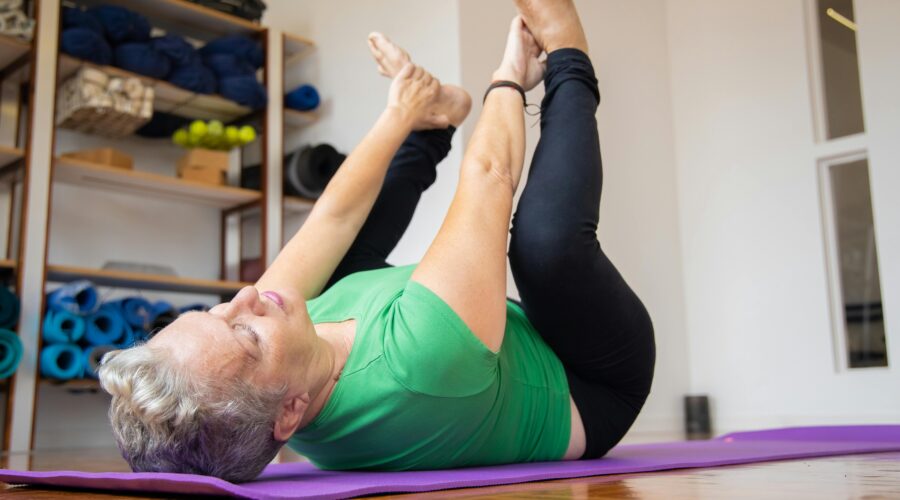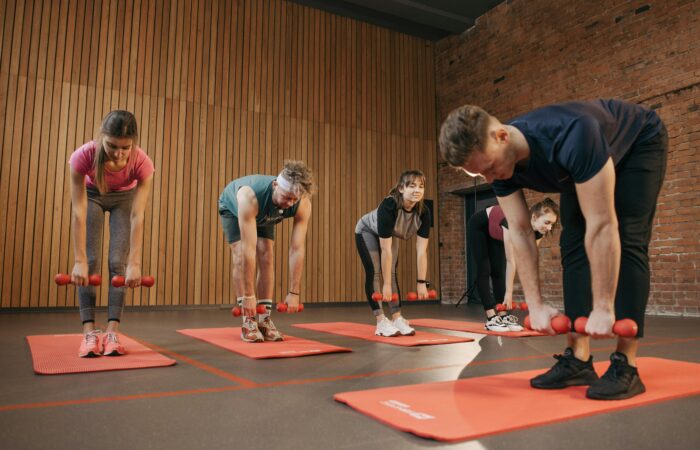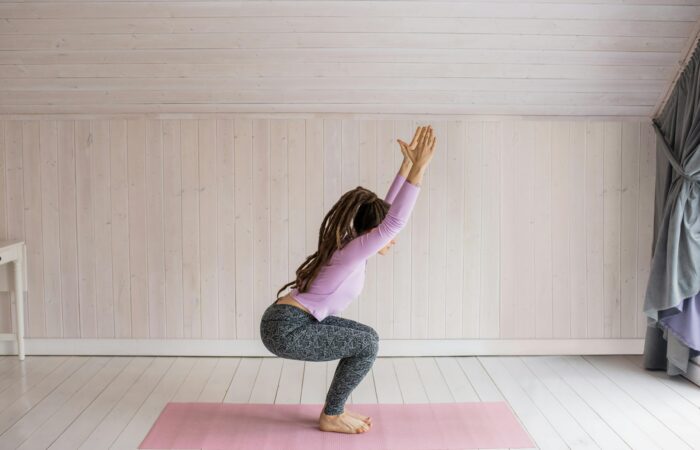Longevity has become a topic of great interest worldwide, with notable entrepreneurs and public figures investing in advanced health routines and technology to extend their lifespans. One example is 47-year-old American entrepreneur Bryan Johnson, who reportedly takes more than 100 pills a day to optimize specific biomarkers in pursuit of a longer life. Another prominent figure in the longevity discussion is Peter Thiel.
By contrast, Canadian-American physician and Stanford University alumnus Dr. Peter Attia—a writer and popular podcaster—advocates a simpler, more accessible approach to longevity that anyone can follow. His plan emphasizes not just living longer but also maintaining mobility and independence as we age.
According to Dr. Attia, we should “train for our future,” ensuring we enjoy a higher quality of life in our later years. “If you want to lift your 30-pound grandson or great-grandson when you’re 80, you’ll have to be able to lift 45 to 55 pounds now,” he explains. He calls this strategy the “Centennial Decathlon,” a training plan designed to help you reach 100 years of age in good health.

Life Span vs. Health Span
Dr. José María Bonorino, a university cardiologist (MN 93.630/MP 55.042) and specialist in Internal Medicine, Geriatrics, and Gerontology at Austral University Hospital, explains that health span refers to the period of life during which a person remains free from health conditions that significantly impact quality of life. Life span, on the other hand, simply denotes the total number of years lived—regardless of health status.
Dr. Bonorino also stresses the importance of addressing four main areas—physical, emotional, psychic, and spiritual—when considering longevity. “The health span is the period in which we’ve been physically active, cognitively sharp, emotionally engaged (in relationships, family, social life, etc.), and connected to our spiritual side,” he says.
According to the World Health Organization (WHO), global life expectancy reached 73.4 years in 2019, but the average health span remained at around 63.7 years. Closing this gap between total life span and healthy years has shifted how we think about longevity.
Investing in the Four Key Spheres
To stay fit, healthy, and work toward longevity, Dr. Bonorino recommends investing time and energy in the four key spheres—physical, emotional, psychological, and spiritual—starting as early in life as possible. “Evolved societies recognize that the optimal time to invest in a healthy lifestyle is from childhood onward,” he notes.

What Is the Centennial Decathlon?
A decathlon is traditionally a 10-event track and field competition. Dr. Attia’s Centennial Decathlon adapts this idea to focus on 10 activities you want to be able to perform at age 100. Rather than simply trying to “stay active,” this plan asks: What do you want to do when you’re 100? Once you have your vision, you tailor your training accordingly.
Dr. Attia encourages his patients to think specifically about the activities that matter most to them in later life. If you want to comfortably carry groceries at 80 or 90, for instance, start training for that capacity in your 40s, 50s, or 60s. He warns that the degradation of lower-body strength, balance, and endurance is significant as we age, so modest exercise in midlife might not suffice later on—you need to aim higher now.
Below is Dr. Attia’s personal “Centennial Decathlon” list from his book Outlive. It features common exercises, functional movements, and lifestyle habits that many of us take for granted in middle age:
- Hike 1.5 miles on a hilly trail
- Get up from the floor using at most one arm for support
- Lift a 30-pound (13.6 kg) child from the floor
- Carry two 5-pound (2.2 kg) bags of groceries for five blocks
- Lift a 20-pound (9 kg) suitcase into an airplane’s overhead compartment
- Balance on one leg for 30 seconds with eyes open
- Have sex
- Climb four flights of stairs in three minutes
- Open a jar
- Perform 30 consecutive jump-rope skips
Everyone’s Centennial Decathlon may look different, but identifying what matters most to you helps shape your personal longevity-training goals.

The 5 Commandments of Longevity
Dr. Attia groups his approach to longevity into five main domains: exercise, nutrition, sleep, emotional health, and medications and supplements.
- Exercise
“It’s the cornerstone of my approach because it impacts both life span and health span more effectively than any other intervention,” says Attia. Exercise not only helps with weight management but also builds a physical foundation for staying active and independent in old age. - Nutrition
Rather than promoting a single dietary philosophy, Attia recommends tailoring nutrition to individual needs and goals. He suggests prioritizing whole, nutrient-dense foods, with the exact composition depending on personal health and preferences. - Sleep
Often underestimated, good sleep is crucial for the body’s repair mechanisms, including brain function. Poor sleep is linked to metabolic disorders, cognitive decline, and weaker emotional resilience. - Mental and Emotional Health
Chronic stress, depression, and poor emotional regulation can undermine physical health. Therapy, mindfulness practices, or simply fostering strong social connections help maintain emotional resilience. - Medications and Supplements
While lifestyle changes are the foundation, Attia acknowledges that supplements and certain pharmaceutical interventions (like lipid-lowering drugs or hormone therapies) can be essential in addressing specific health risks.
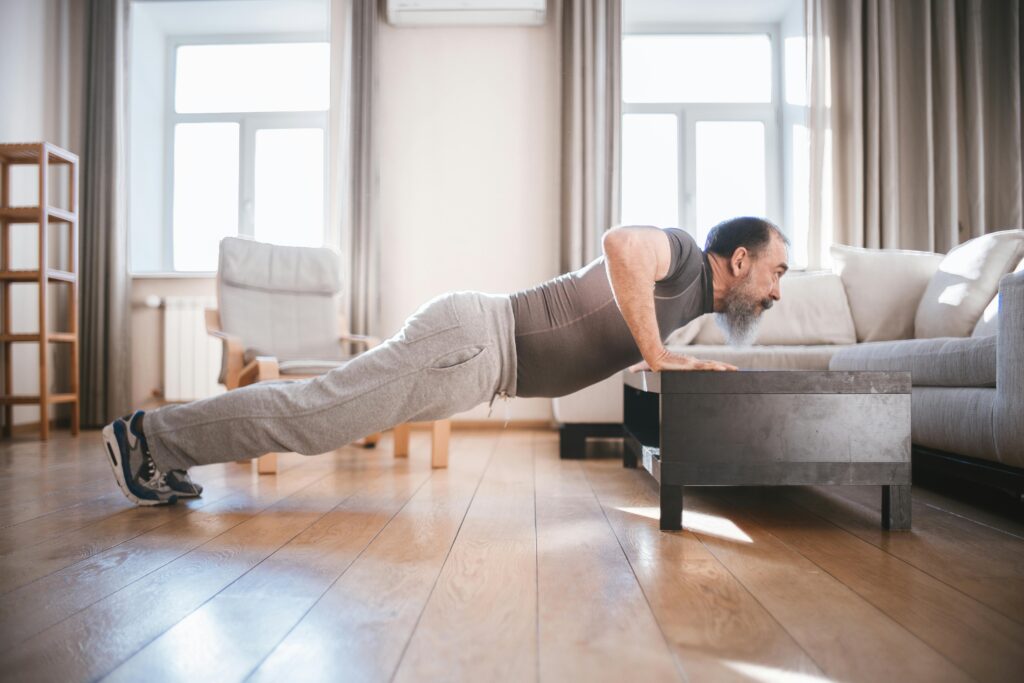
Designing a Longevity-Focused Training Routine
Dr. Attia’s research and experience highlight four key pillars of exercise for longevity: aerobic efficiency, maximal aerobic performance (VO2 max), strength, and stability. Here are examples of how to train each pillar:
- Aerobic Efficiency (Zone 2 Training)
- Walk 3–4 miles (4–6 km) in about 1 hour
- Jog for 30 minutes while maintaining a conversation
- Ride a bike for 45 minutes at 12–14 mph
- Maximal Aerobic Capacity (VO2 Max)
- Interval workouts: Exercise at about 90% capacity for 3–5 minutes, then recover
- Examples include stair climbing intervals, high-intensity interval running, or sets of jumping jacks followed by short recovery periods
- Strength
- Perform 10 push-ups in one set
- Perform 20 squats in one set
- Perform 10 bicep curls with 20-pound (9 kg) weights
- Stability, Flexibility, and Balance
- Do 30 minutes of yoga or Pilates
- Walk up and down stairs with feet pointed straight ahead (showing good ankle mobility)
- Hold a perfect plank for 1 minute
Dr. Attia recommends at least one hour of cardio, one hour of strength training, 20–30 minutes of VO2 max work, and 10 minutes of mobility/balance exercises per week for longevity. For those with minimal free time, even starting with just 90 minutes of exercise a week can significantly reduce overall mortality risk, including the “Four Horsemen” of chronic disease: cardiovascular disease, cancer, cognitive decline (e.g., Alzheimer’s), and metabolic disease (e.g., type 2 diabetes).
“The art of living longer has little to do with going to the doctor,” Attia concludes, “and more to do with simultaneously challenging and avoiding all the factors that contribute to physical, cognitive, and emotional decline.”
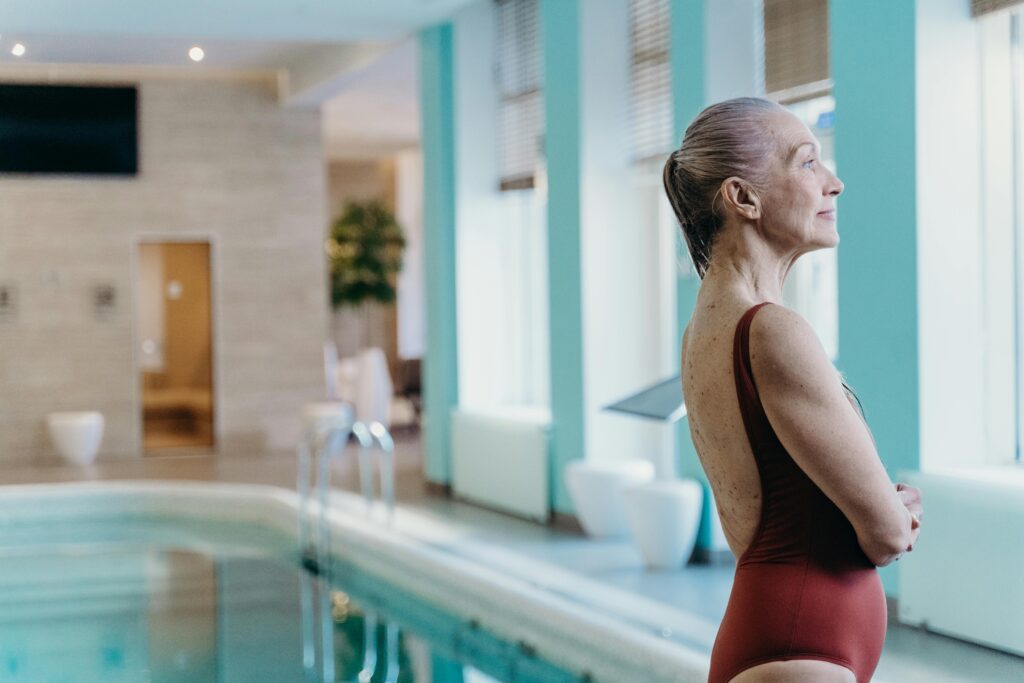
Practical Keys to Longevity
Dr. Bonorino advises that the sooner you begin caring for yourself, the better—but it’s never too late to start. He also underscores the importance of finding your “purpose” or “why” in life. Along with nurturing that sense of purpose, Bonorino recommends:
- Following a healthy Mediterranean or vegetarian-style diet rich in fruits, vegetables, legumes, and whole grains
- Minimizing salt, processed foods, red meat, refined flours, and sweets
- Engaging in at least 30 minutes of aerobic exercise (walking, cycling, swimming, dancing, or light jogging) every day
- Adding strength, coordination, stretching, and balance exercises to your routine
- Avoiding smoking and drug use, while minimizing alcohol consumption
- Keeping blood glucose and lipid levels in check to reduce inflammation
- Staying socially active and connected to friends, family, and community
- Maintaining a positive purpose in life, with attention to spirituality and legacy
- Scheduling regular medical checkups for early detection of potential health risks, including cardiovascular and cancer screenings
- Ensuring adequate sleep in both quality and duration
By investing in these preventative measures and adopting a mindset focused on both lifespan and health span, more people can aspire to reach old age with energy, independence, and vitality. The key lies in both starting healthy habits and continuing them throughout life’s various stages—because the future you’re building depends on what you do right now.

